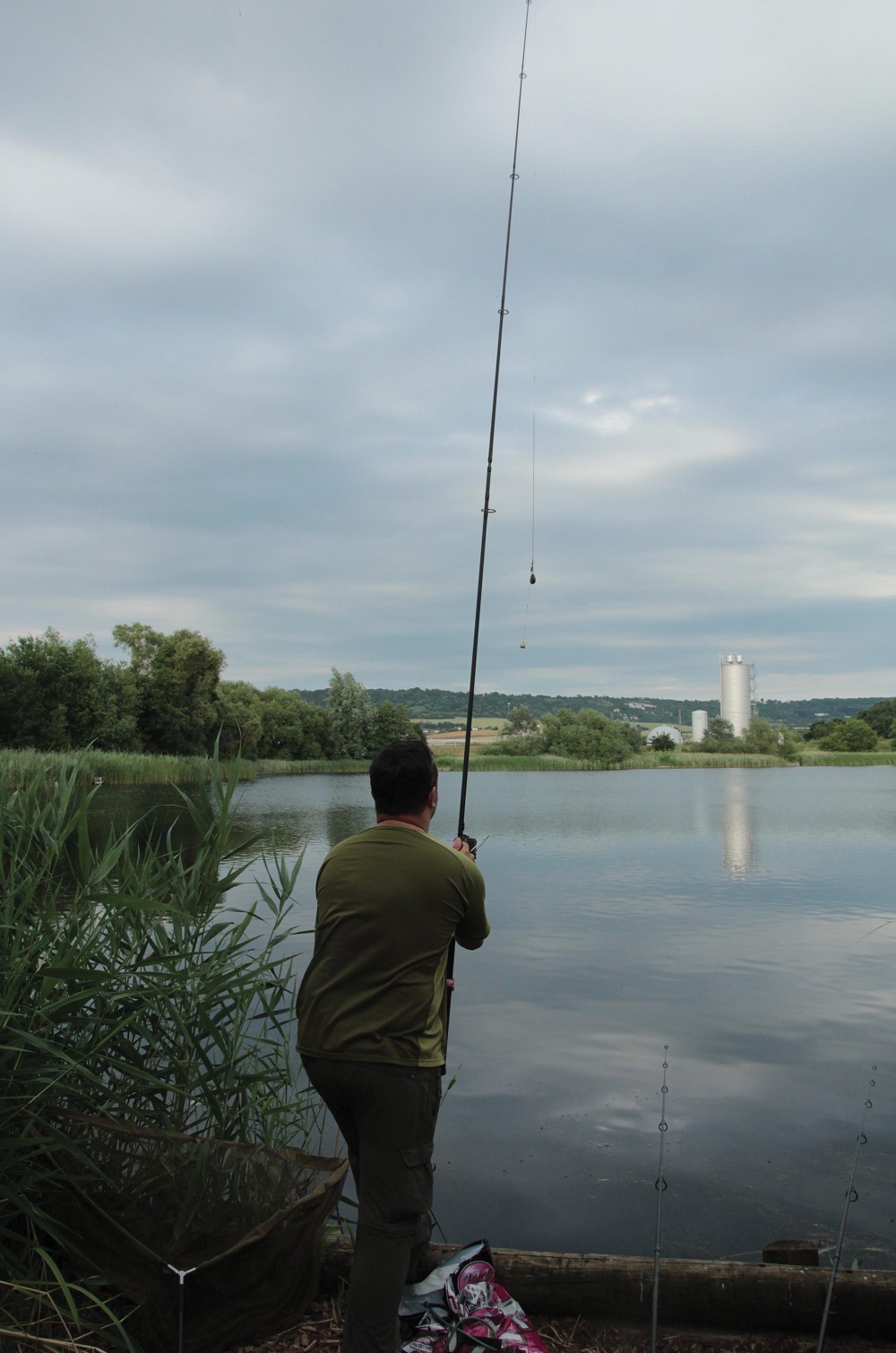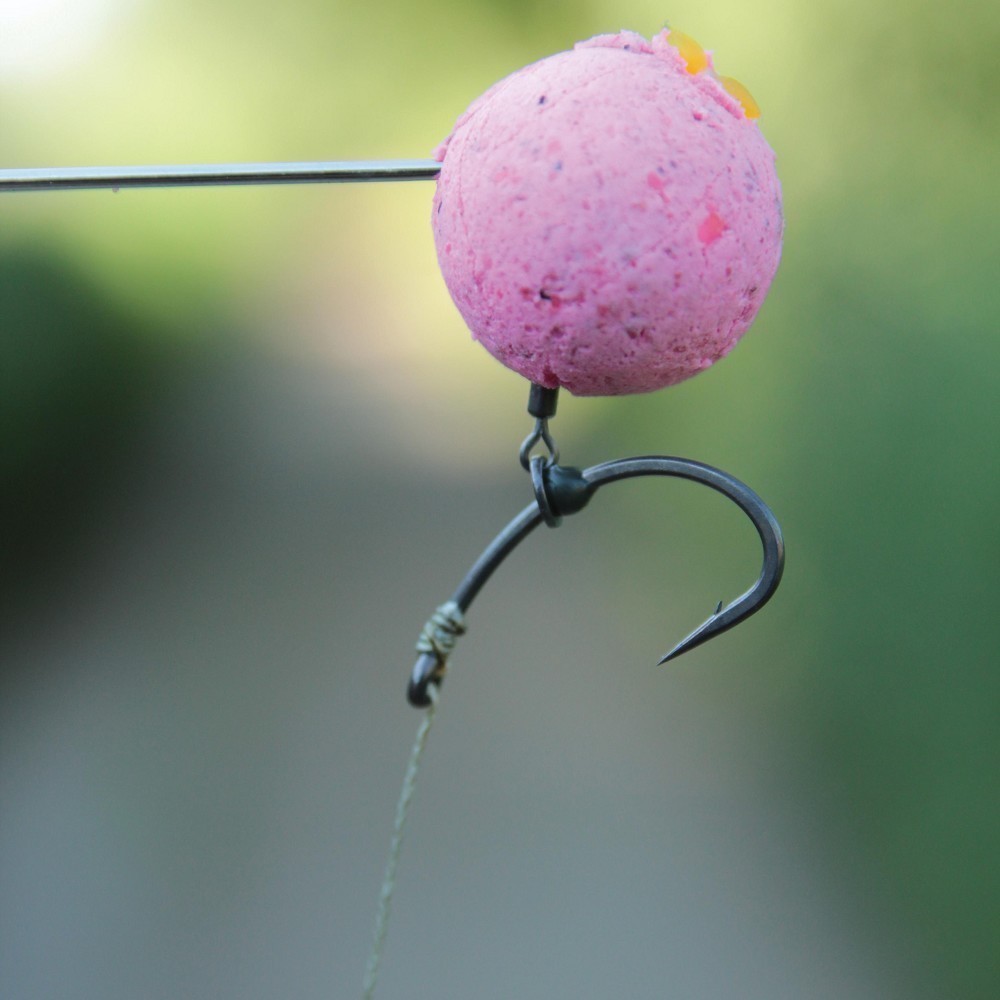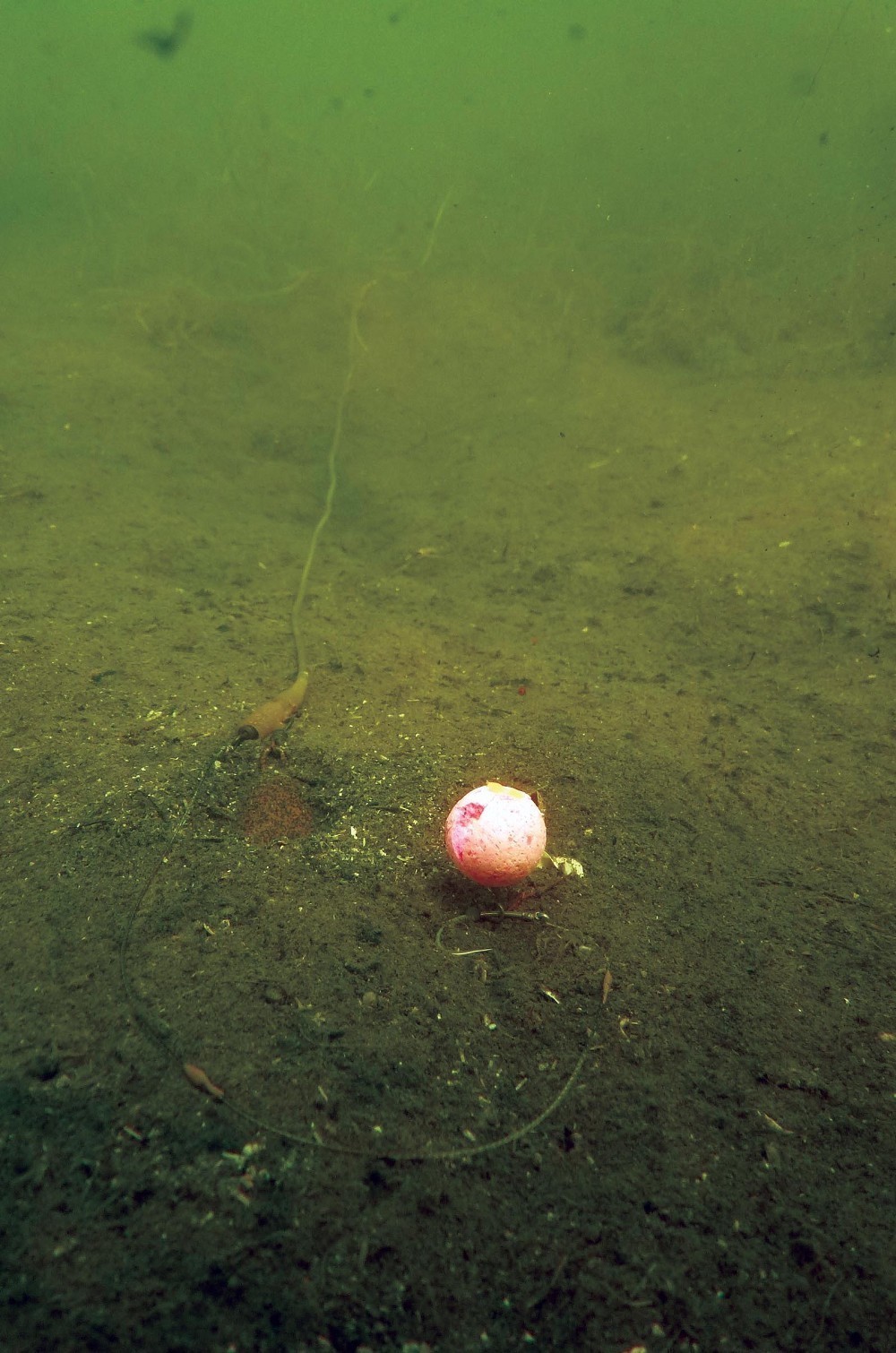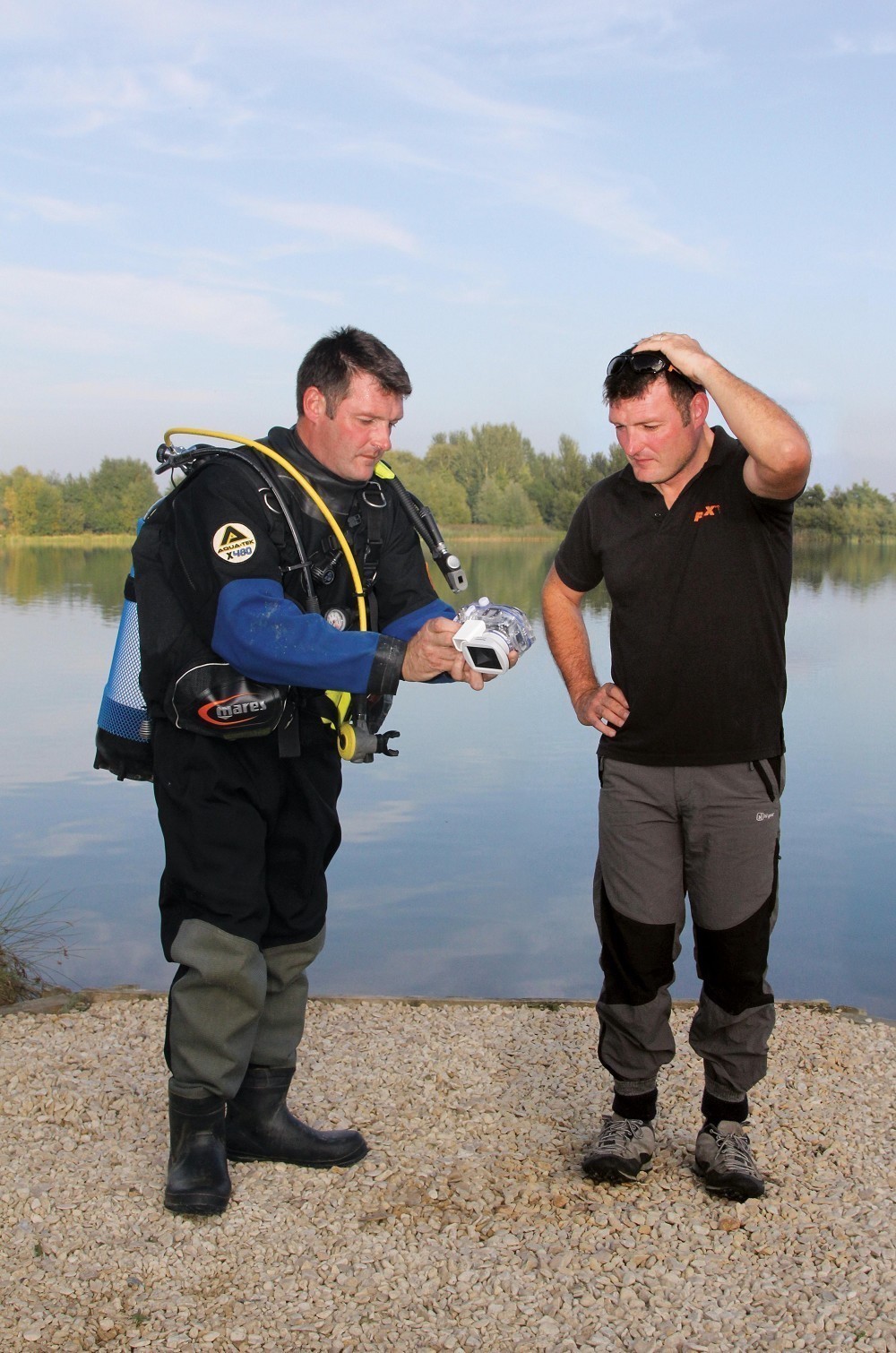Below The Surface: Lee Randall
We test Lee Randall: A Kent lad who's off the radar but has been around the block a few times
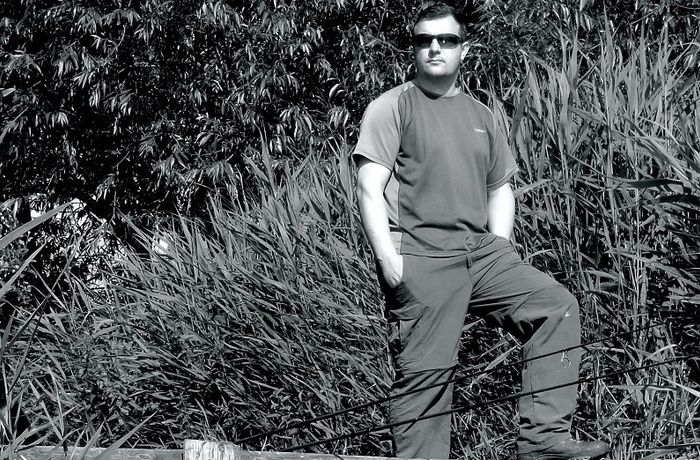
inally, after a horrendous journey through some horrendous traffic conditions I’ve rocked up at Brooklands Lake in Snodland, Kent. This is the Medway Valley Fisheries Brooklands as opposed to the DDAPs Brooklands for sake of clarification, and my victim today is Century-backed Lee Randall. He’s a Kent Lad, and despite having been around the block a few times and having caught a lot of good fish, this is his first ever magazine feature.
Being by the side of water is amazing and after a stressful journey of almost 5hrs in some hideous queues (my FB followers will know I love a queue) I’m relaxed within minutes as I’m met with a cracking chunk of water. Talking to Lee, even though he’s a local lad, Operation Stack is in place and the M20 is a nightmare making his journey across the county one of almost 3hrs. A lot of effort for an overnighter, but that’s why he’s successful.
At 25-acres, Brooklands is a reed-lined club water that is, quite frankly, beautiful and it leaves me wishing I lived closer. Lee is pitched up in a swim known as The Bailiffs and although he has fished the lake a few times, he hasn’t been here for four years.
“They’ve grown on quite a bit and they are still growing,” said Lee as we watched firstly a chestnut brown mirror of mid-twenties roll some 30yds out in front of him and then secondly a grebe pop to the surface in the same sort of area but looking a little bit stressed.
“I’m only here for an overnighter, not a quick one, but a proper one (we’ve been joking about ‘quick overnighters’). I finished work mid-afternoon, arrived at the lake after more horrendous traffic and found the wind blowing down this end of the lake. I’ve done my homework and found that this end is producing a few, too. I also know from past experience that this part of the lake is good early season.”
Lee spent a few minutes having a quick cast and feeling the leads down before confirming he was satisfied with his spots and got three rods in place in no time at all with the minimum of fuss.
“Just under the rod tips it’s pretty weedy up to about 20yds out where it drops off to around 17-18ft. It’s pretty clear then all the way over to the other side. The fish love staying up on the shelf in the weed and the shelf goes out a little further here so it’s a bit weedier a bit further out. This is probably why it’s so productive. I’ve just started on Pingewood up in Reading and also fished Conningbrook a few a years ago so I’m well used to weed and it doesn’t bother me in the slightest.
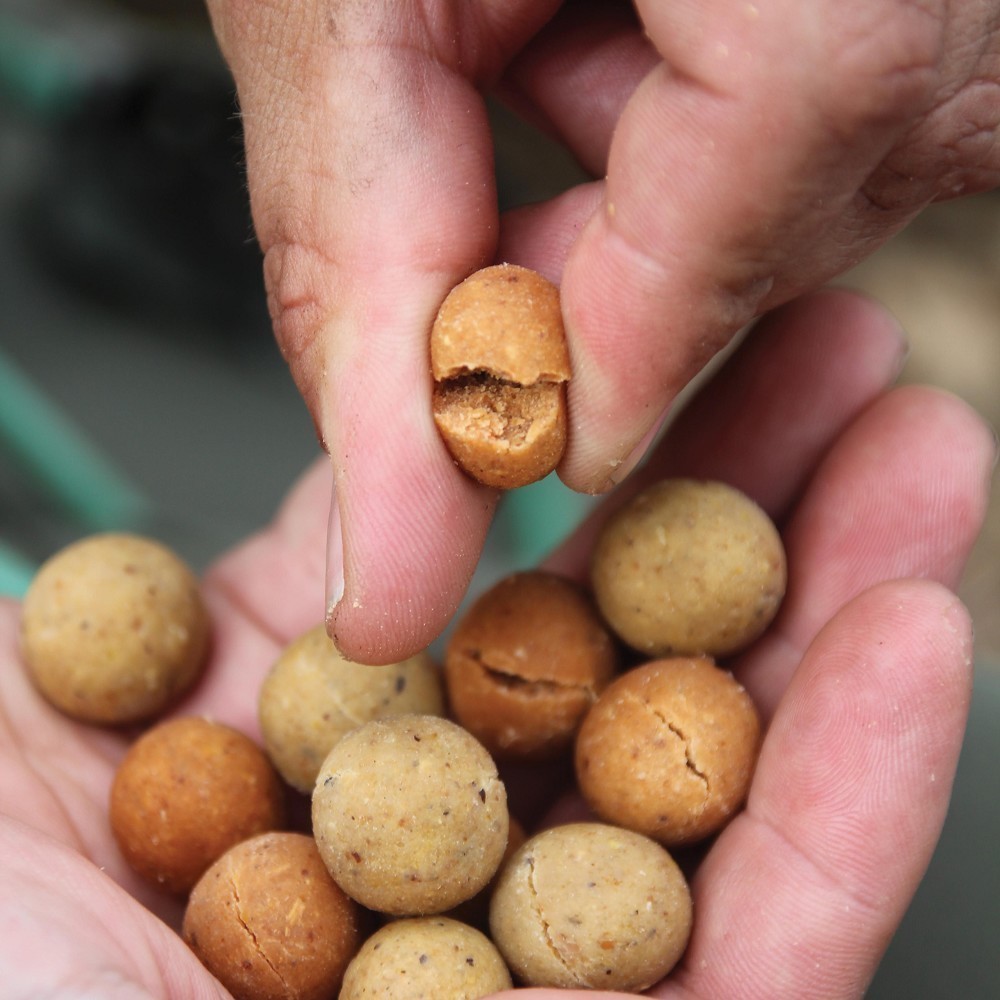 Bait was a mixture of Cell and Hybrid boilies, and as he was fishing short-range, he squashed them to split the skins Pac-Man style.
Bait was a mixture of Cell and Hybrid boilies, and as he was fishing short-range, he squashed them to split the skins Pac-Man style.“I’m looking for a few clearer and slightly shallower spots coming up the shelf for two of the rods and the right-hand rod is in about 5ft of water up on the top the shelf. The other two are slightly deeper at about 9 and 12ft. I reckon all three are clean as they all went down with a donk. The lead doesn’t plug in so I’d say it’s firm with a light layer of silt over the top.
“I’m using a lead clip to allow the lead to drop-off because of the weed. It’s set-up in such a way that if I don’t get a bite, the lead doesn’t eject, but if I do and it catches weed, it will fall off easily. I do this by putting just a bit of tension on the tail rubber to hold the lead in place. All three leads are 2.5oz flat pears. A local bloke called Cliff makes them and I like the shape of the leads and the way they sit on the bottom as they have a low profile. Being flat, they also sit on the angle of the shelf better and don’t roll down it so I know that where it lands, is where it stays.
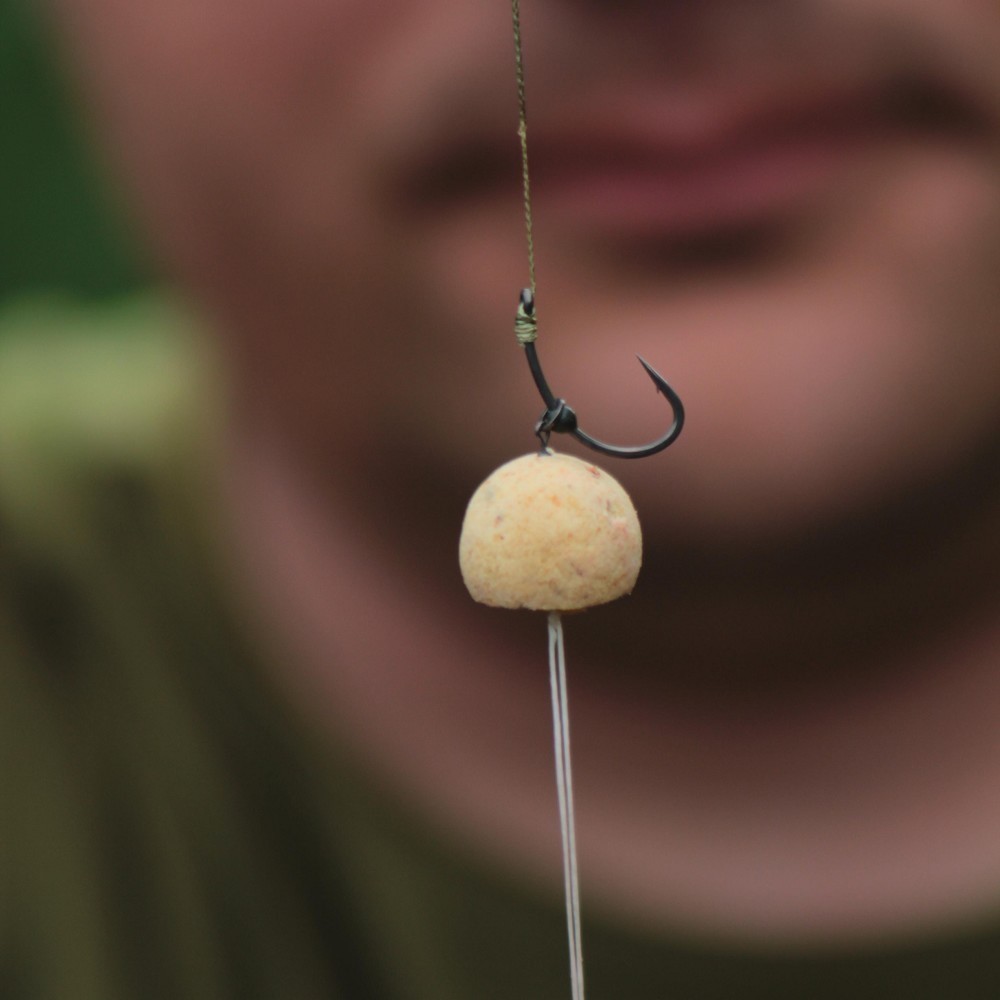 Two of the rigs would be on a bottom bait set up of Camotex Soft, a size 5 SR hook and a mini ring swivel to give the bait more movement. The third would be a Multi Rig with a pink pop-up
Two of the rigs would be on a bottom bait set up of Camotex Soft, a size 5 SR hook and a mini ring swivel to give the bait more movement. The third would be a Multi Rig with a pink pop-up“Two of the rigs are on Camotex Soft 20lb to a size 5 ESP Curve Shank. It’s a rig I’ve caught plenty of fish on, and fishing with wafters it sits very well. I strip a tiny bit of coating back to allow some movement and put a ring swivel on the shank. The third is a 20lb Camotex Multi Rig with a size 5 SR but this time it has a pop-up rather than a wafter.
“I’m spread-betting on the hookbaits having two different ones, but they are all more or less in the same area but at slightly different depths. There’s clearly fish here and I want to give them as much chance of finding my bait as possible. If it was all in one spot, or all one type, it might not be what they want and this being an overnighter I want to maximise my chances. If I was on here as a regular I would have found a pattern and they would be all on that.
“I like fishing half a bait as a hookbait on one. I think it’s different to what everyone else does and in my mind there is always that one time where it might make a difference. The pink baits I’m using are actually white Mainline Peaches & Cream wafters soaked in Almond Goo which I have found to be brilliant, and the last is the same bait but using a pop-up on the Multi Rig rather than a wafter.”
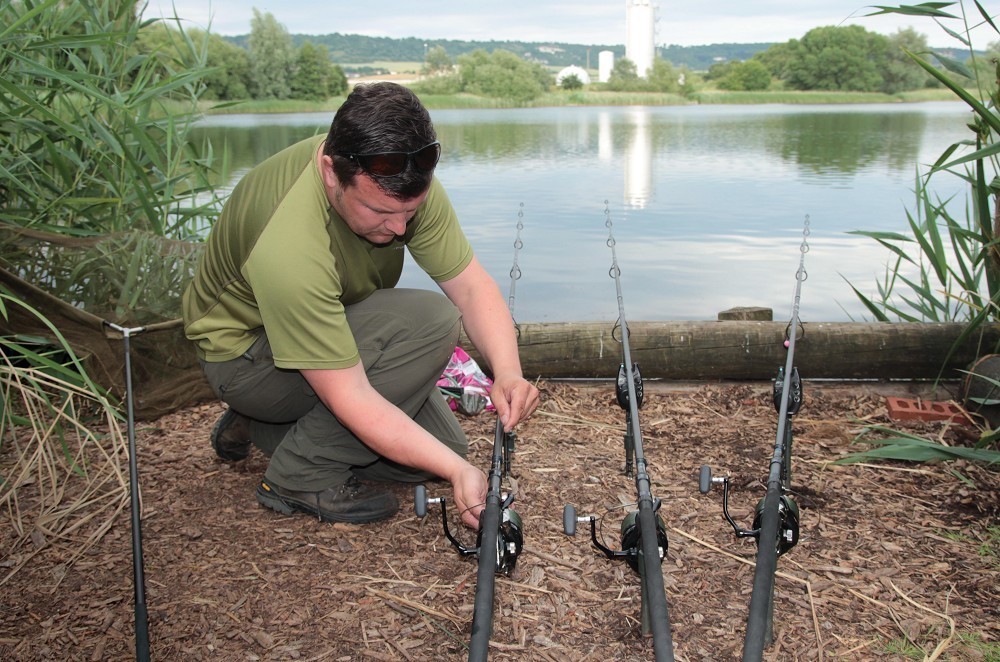 Rods out with the minimum of fuss, the bobbins were clipped on and Lee was ready to go in no time at all
Rods out with the minimum of fuss, the bobbins were clipped on and Lee was ready to go in no time at allBaiting up
“I know there are fish in the area, and because I’m fishing a patrol route or an area they want to be in, I don’t need to put in loads of bait. I’m a boilie angler but I do like to use hemp on occasions. However, I think hemp is better if you have a couple of days to go at to establish the area. On a water with this type of stock, not low but not prolific, I think Spombing would be too much for an overnighter, especially on the shelf so it’s boilies with the catty that I’ll be putting in.
“Once again I’m spread-betting a little with about 20 baits around one (the one in the shallower water), 50 around the middle rod and about 100 around the other. It sounds a lot of bait, but two or three fish would soon get through that.”
Line lay and indication
“I do whatever is needed and don’t always fish one method,” states Lee as I probe him about his line lay and indication. “If I need to fish tight, I’ll fish tight and if I need to fish slack, I’ll fish slack, but I do tend to prefer slack. Tonight I’m in the edge and there’s clear water so I’m slack lining. I want to try and get the line down as much a possible to conceal it through the weed. Even though it’s slack I worry a little that it is still off the bottom and will spook fish. Quite often I will use short lengths of tubing and I always use putty up the line even if I’m fishing clear ground; it can’t hinder and will probably help.
“My bobbins aren’t quite on the deck, they’re hanging straight down on the chains and the line is in the clip so it should show any movement quite easily. I like to use a clip quite simply because I like them, and the clutches are quite tight to get the fish up in the water should I get a bite.”
With the rods on the spots within 15 minutes, Lee was fishing pretty quickly. It took just a few casts with each rod and that allowed Lee enough time and information to find presentable areas. No marker float was required. The kettle went on, and it was game on: water-watching time. There were shows all over the place and we decided that I shouldn’t go in tonight as there was a very good chance of a bite, and being so close to bite time they may well spook off. We knew what Lee had done and could check out the lie of the land in the morning.
I have to say that by midnight we were a little surprised that he hadn’t had one. However, it only got dark at 10:30 so when we said our goodbyes I fully expected to see him in the morning with one or even two fish waiting for snaps.
That sinking feeling
06:00hrs and the kettle’s back on and we’re chatting about what had gone on. Nothing was the answer, and the sun was now getting high in the sky and bite time was slipping away.
We’re facing east so the sun is shining directly in to the swim and that will have a massive effect on light levels below the water. Furthermore, there are two families of coots that are right over Lee now, whereas yesterday there were none. It doesn’t feel carpy but yesterday evening it did, and our carp radar tells us that they’ve probably gone.
“If I was staying longer I would probably have already done the off by now to find another swim. The wind has swung away from us and I am now on the back of it and they do move very quickly here. The wind swung 180 just after dark and whilst there was activity last evening, there was very little through the night. I’ve been up since 4am and seen only a couple of fish, both were cruisers, and both heading down to my right.
“There were a couple of occurrences last night in the time that I thought might catch just before dark. The first was a slow short lift with three bleeps on the right-hand rod, and the left was a very aggressive up and down on the left. Neither took line but I feel the left may have been a bite and I have been done. I wouldn’t be surprised to see the left has been moved, even though we don’t know exactly what it was on first.
“The coots have been diving on me this morning but they weren’t that active last night. On the right-hand rod there were only 20 baits around the hook, the birds were still picking up food, so the carp couldn’t have been feeding that heavily as there still seems to be the odd bait there.”
With that the right-hand rod tightened up and bleeped and Lee was on it like a shot. A coot popped up short and well to the right and he’d actually had a cracking coot liner. So we sat there scratching our heads wondering what had gone wrong… Analysis time.
- Swim choice: bang on – fish seen.
- Spot: perfect – fish seen over spots
- Approach: stealthy
- Bait: doesn’t even enter the equation
- Rigs: used to good effect before
- Presentation: to be seen
- Line lay: to be seen
nd with that I got in the pond. There was weed in the margin straightaway and I could see Lee’s lines snaking slackly over the top. The line then started rising again and on the middle rod it came up to within a foot of the surface about 20yds out as it was caught on the fronds of a leaf. That’s one of the issues with slack lines over weedbeds and it happens regularly. However, the line lay wasn’t seriously bad, just lifted in places.
As I crossed onto the other side of the weed, I could see Lee’s swim reading was bang-on. The weed stopped pretty abruptly, the bottom started to drop-off although not that steeply, and the deck was clean and firm with a thin covering of silt. It was quite a dark brown colour and interestingly one of the first things I spotted was how the lead had landed. I found his right-hand rod first but it wasn’t lying flat as we would have expected it to be, but side on in the silt, well buried and well camouflaged. Had it been picked up and dropped? Maybe, but it could have been a coot or a fish. It was the rod that had suffered the savage liner but there was no obvious spot as to where the lead had landed previously. The tubing was flat on the deck and the slack line behind it held down by the blobs of putty. It looked good. It looked very good in fact, but there was virtually no bait around it. This was the rod that had a 100 baits scattered round it and other than the hookbait there was only one left!
As I went over to the middle rod I found three baits in total out of the 50 that had been put in. I also noticed that his lines were very, very dirty. They’d been in the water just 12hrs or so but there was a lot of sediment attaching to them. This is typical of this time of year and some ponds and lines are worse than others, but either way it pays to reel in through a cloth to wipe them clean.
The middle rod was the pop-up and this too was sitting exceptionally well with the line on the deck, the hooklink on the deck and the bait clear of any obstacle. Looking closely at it, I saw that there was a red mark on the hookbait and assumed that the hook had twisted at some stage and become impaled on the bait, dying the point red. It was only when we got it out of the water to look at it that we realised that it was rust – in just 12hrs. Lee had touched his hook up a little with four or five brushes with the sharpener but this was enough to cause it to rust in the semi-brackish waters of Brooklands (it’s right next-door to the Medway estuary).
The third rod had been reeled in that morning for the coot liner, so I got Lee to cast it back out and bait up as if he were fishing again so I could see what the presentation looked like ‘fresh’. Once again he was spot-on with his rig placement, just over the weed in five odd feet of water. The tubing sank flat, the hooklink lay pinned down on the deck and it looked lovely for a bite with the wafter balancing off the weight of the hook.
His bait was in a lovely scattering just behind it and to be honest it looked just about as right as it could be… and would have the day before but nothing had occurred. I was confused.
To close the feature I carried out the usual indication test and despite the fact that the lines were very slack they performed quite well. The strike was felt after the rig had been moved approximately 3ft although I suspect that if the distance was much further, the indication would have been poorer. I also feel that, in hindsight, I picked the wrong rig to test. There was a lot less weed between the rod and lead on this rig so the line lay was better. I’m convinced that if I had tested the right-hand rod that was bowed into the weed by the slack, the indication result would have been different. This shows that slack lines with few obstacles are okay; with slack on the wrong side of the weed there would have been a different result for sure.
With the final test finished we were left to discuss our findings and I must say that I was quite baffled. I’m not usually lost for words but I couldn’t see any reason for him not catching. His presentation was bang-on, and if I had to put my marking hat on, the only thing that I could make any comment on was the fact that the slack line in the weed would have hindered indication. But that wouldn’t stop the fish picking the baits up.
We both felt that he may have been picked up and dropped the night before, but there were no obvious signs that this was definitely the case, unless the telltale lead on its side was evidence that a fish had picked up the bait and dropped it.
Lee's conclusions
“Overall I’m very happy with my rigs presentation and also reading of the swim. It’s exactly as I thought it was. My baiting up was also good as I like a small trail from the back of the spot into the rig as there’s less chance of them spooking off your lines if they come in from behind. I’m a little surprised at how much bait was eaten though. With the coots diving and still picking up bait this morning I thought there would still be a lot more left but there wasn’t, and having watched the coots, there’s no way they picked all of it up. There must have been carp in there and I still feel I should have caught one really. The two occurrences we had could well have been two chances. Perhaps if I was using 4oz leads I would have nailed them, perhaps if the lines had been tighter there would have been better indication, but then again this rig, these leads, and this exact set-up has caught me shedloads of carp in the past so it could just be one of those things.”
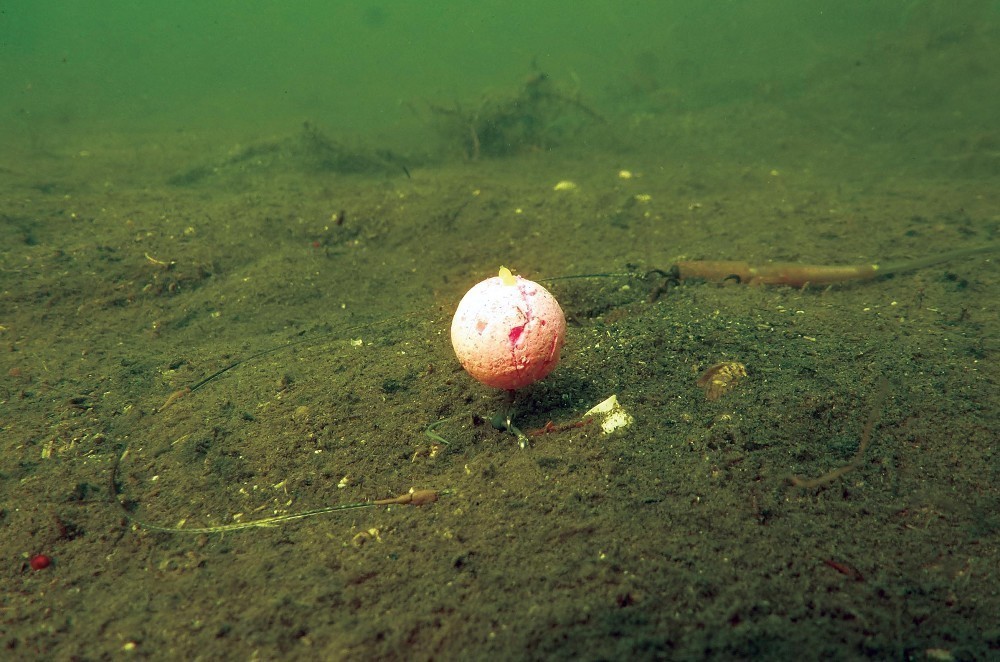 For me, this is about as perfect a presentation as you can get. A critically balanced bottom bait on a pinned down hooklink. Top marks
For me, this is about as perfect a presentation as you can get. A critically balanced bottom bait on a pinned down hooklink. Top marks1. High point
“I’m really happy with the way the rigs looked in the water. Really happy. The colour looked good, the way they sat was good and I was really pleased with it. It’s what I hoped and when I hadn’t caught one I was a little worried about my presentation but I needn’t have been.”
2. Low point
“Line lay. I wasn’t happy with the way the line was sat and also the rusty hook. Who’d have thought it? I didn’t like how the line stuck out, how it rose up back up to the surface again just before the spot, and also how there were a few hinge points. I’ll fish it a little tighter in future.”
3. Biggest eye-opener
“The Pivot points on the weed. I can see now that the common perception of fishing short and slack is actually completely the opposite to what we need to be doing if there is weed in front of us. I’ve fished like it for years but I can now see that there is a chance of catching more with a slightly tighter line and getting better indication and line lay.”
4. One thing differently
“It’s easy now but I’d fish slightly tighter lines, which I never thought I would have been saying to be honest. They wouldn’t be bowstring tight but they certainly wouldn’t be as slack as they were. I can’t be sure that I’ve been done, but with a tighter line I feel that I might have had a better chance of picking a fish up.”
5. Genie in a bottle, the opportunity to ask Rob Hughes one question
Lee: “Someone has told me that a lead being reeled in is really noisy. Is that true?” Hughesy: “Yes, a slow retrieve is better than one being thrashed across the surface, splashing as it goes. Any noise made in water travels really easily so try to keep noise down to a minimum.”
Hughesy conclusion
For one of the first times ever I’m a little baffled. I can’t see any reason at all why he didn’t catch unless it was simply a case that they weren’t having it. The rigs were bang-on, the bait works, the fish were in the zone, the freebies were eaten, and yet there was no bite. Had he been done and the fish then done the off? Possibly, but his rig works well and he’s caught loads on it. A heavier lead may have helped, as might tighter lines but I can honestly say that I thought his presentation was great and couldn’t really fault it.





